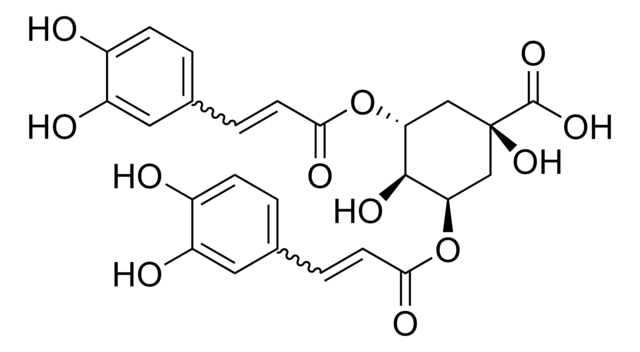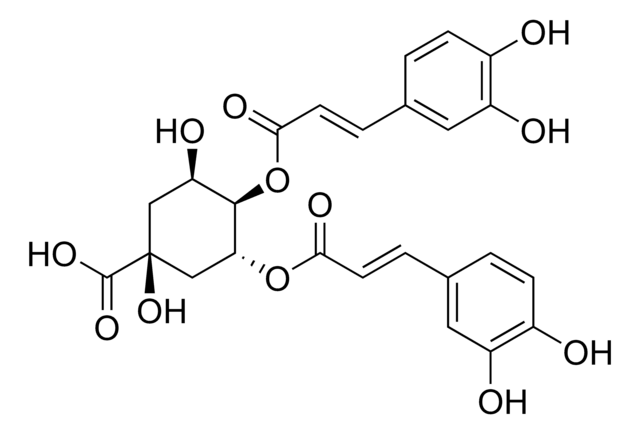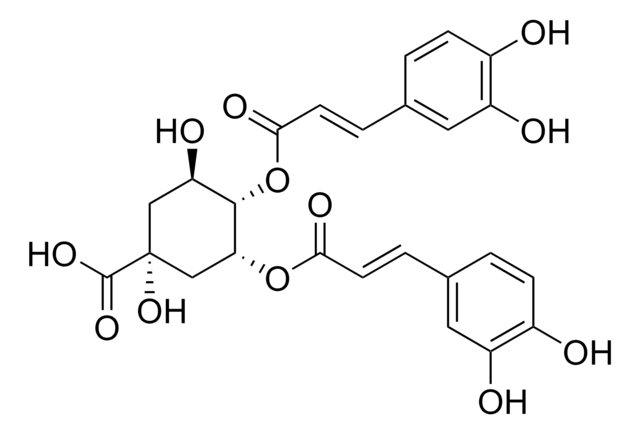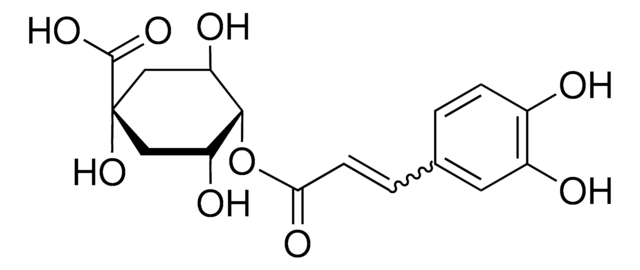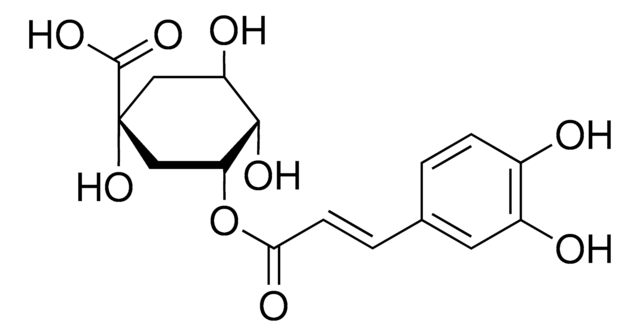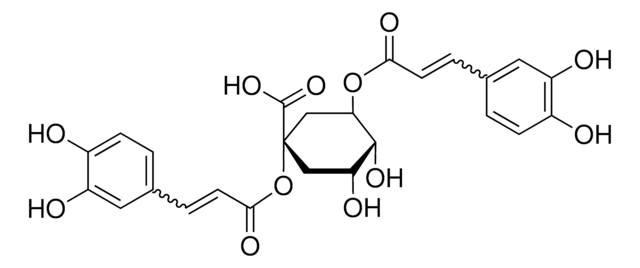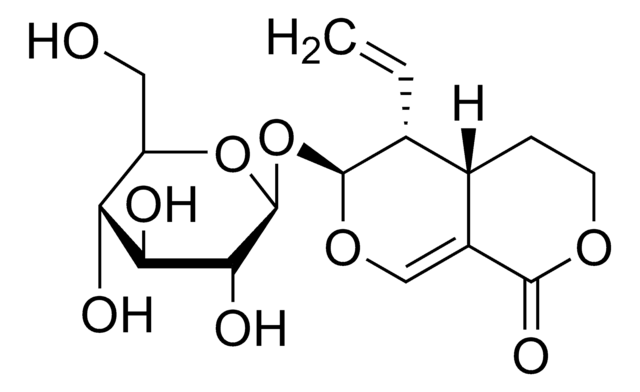SMB00224
3,4-Di-O-caffeoylquinic acid
≥90% (LC/MS-ELSD)
Synonym(s):
3,4-DICQA, 3,4-Di-O-caffeoylquinate, 3,4-Dicaffeoylquinic acid, Isochlorogenate B, Isochlorogenic acid B
About This Item
Recommended Products
Quality Level
Assay
≥90% (LC/MS-ELSD)
form
solid
application(s)
metabolomics
vitamins, nutraceuticals, and natural products
storage temp.
−20°C
SMILES string
O[C@@H]1C[C@](O)(C[C@@H](OC(=O)\C=C\c2ccc(O)c(O)c2)[C@@H]1OC(=O)\C=C\c3ccc(O)c(O)c3)C(O)=O
InChI
1S/C25H24O12/c26-15-5-1-13(9-17(15)28)3-7-21(31)36-20-12-25(35,24(33)34)11-19(30)23(20)37-22(32)8-4-14-2-6-16(27)18(29)10-14/h1-10,19-20,23,26-30,35H,11-12H2,(H,33,34)/b7-3+,8-4+/t19-,20-,23-,25+/m1/s1
InChI key
UFCLZKMFXSILNL-PSEXTPKNSA-N
Looking for similar products? Visit Product Comparison Guide
Related Categories
General description
Application
- to quantify the caffeoylquinic acids of Artemisia frigida Willd. (Fringed sagewort) using high-performance liquid chromatography with diode array detection and electrospray ionization triple quadrupole mass spectrometric detection (HPLC-DAD-ESI-QQQ-MS)
- to quantify the phenolic compounds of Artemisia species using high-performance liquid chromatography with diode array detection (HPLC-DAD) technique
- for metabolic profiling of methanolic leaf extract of A. nallamalayana and to identify the phenolic acids using High-Performance Liquid Chromatography-Ultraviolet (HPLC-UV) analysis
Biochem/physiol Actions
Storage Class Code
11 - Combustible Solids
WGK
WGK 3
Flash Point(F)
Not applicable
Flash Point(C)
Not applicable
Choose from one of the most recent versions:
Certificates of Analysis (COA)
Don't see the Right Version?
If you require a particular version, you can look up a specific certificate by the Lot or Batch number.
Already Own This Product?
Find documentation for the products that you have recently purchased in the Document Library.
Customers Also Viewed
Our team of scientists has experience in all areas of research including Life Science, Material Science, Chemical Synthesis, Chromatography, Analytical and many others.
Contact Technical Service